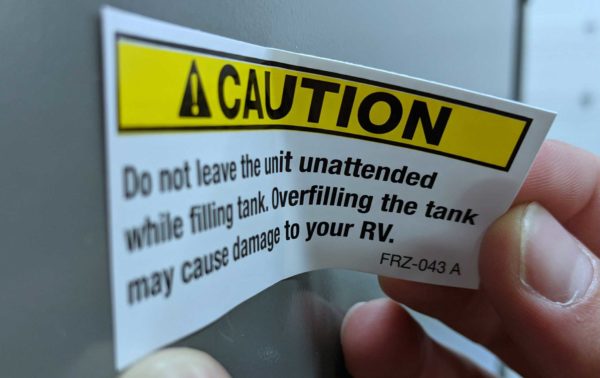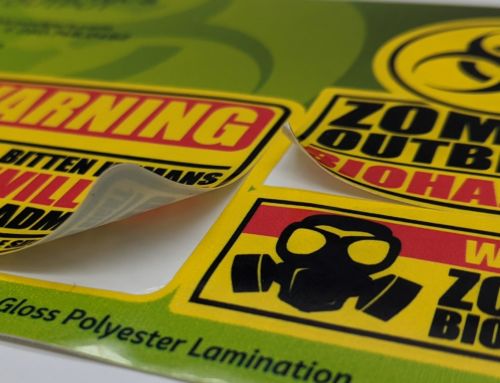Not all decals are made the same—nor should they be. Cold temperatures reduce the plasticity of materials, so they’re more brittle and likely to chip. Whether your decal is going to be used on a freezer or stuck outside somewhere in Alaska, follow the right steps so your decals can withstand below-freezing temperatures, snow, and ice.
Use the right material …
Consider using vinyl print film and lamination instead of polyester for low-temp decals, especially if they’re going to be used on a curved surface. That’s because polyester is more prone to becoming brittle than other materials. If your application requires the UV or chemical resistance of a polyester lamination, confirm the servicing temperature of your lamination. While the standard range for most vinyl and polyester is -40 to 200 degrees Fahrenheit, some polyester lamination can withstand temperatures only as low as -20 degrees Fahrenheit.
Cast vinyl is a thin material that is superior when it comes to flexibility, so it’s an ideal choice for cold-temperature graphics. Vinyl 3M IJ180Cv3, for example, has a service temperature range of -65º to 225 degrees Fahrenheit, which is 15 degrees lower than a standard calendered vinyl can withstand. The vinyl’s additional pliability lets it easily conform to curves and flex as needed.

The vinyl used to make the sign on this QF+ In-Rack Freezing System is built to withstand the constant chilled air of the blaster.
… and the right adhesive
When selecting adhesive, choose one made for the surface you’ll apply the label to. Once the adhesive has bonded, temperature shouldn’t affect the adhesive’s performance.
However, applying a decal when it’s too cold can cause the adhesive bond to fail, because low ambient or surface temperatures decrease both material flexibility and initial adhesive tack. These two factors combined during application can assure your decal doesn’t stand a chance of adhering.

Standard pressure-sensitive materials have a normal minimum application temperature range of 40 to 50 degrees Fahrenheit. If the surface temperature is near that correct range, but still below, the decal may stick initially but fail to bond enough to become permanent. That means your decal will peel prematurely or completely fall off. The closer a graphic is to room temperature, the easier it will apply and the quicker the adhesive will bond to the surface.
Sometimes, though, you don’t have a choice, and you have to apply a decal in cold weather. If you must apply graphics below 40 degrees, keep the following in mind:
- Afternoon temperatures tend to be warmer than morning temperatures.
- Graphics and application tools should be as close to room temperature as possible before use. Keep them in a warm, running vehicle until just before application.
- Surface temperatures should be as close to room temperature as possible during application. Apply a small amount of heat to warm the surface prior to application with a heat gun. Keep in mind that using heat on a cold window or other glass surface may cause glass breakage.
- If you’re using the wet method of application, avoid water-based solutions. Instead, select anhydrous isopropyl alcohol or Rapid Tac II as your wetting solution.
- After application, apply a very small amount of heat to the graphic to accelerate the adhesive bond.
If you’re still unsure which material is best for your low-temp application, let the trained professionals at Graphics Output help you out. Simply email sales@gographicsoutput.com or give us a call at 260-748-0577.



